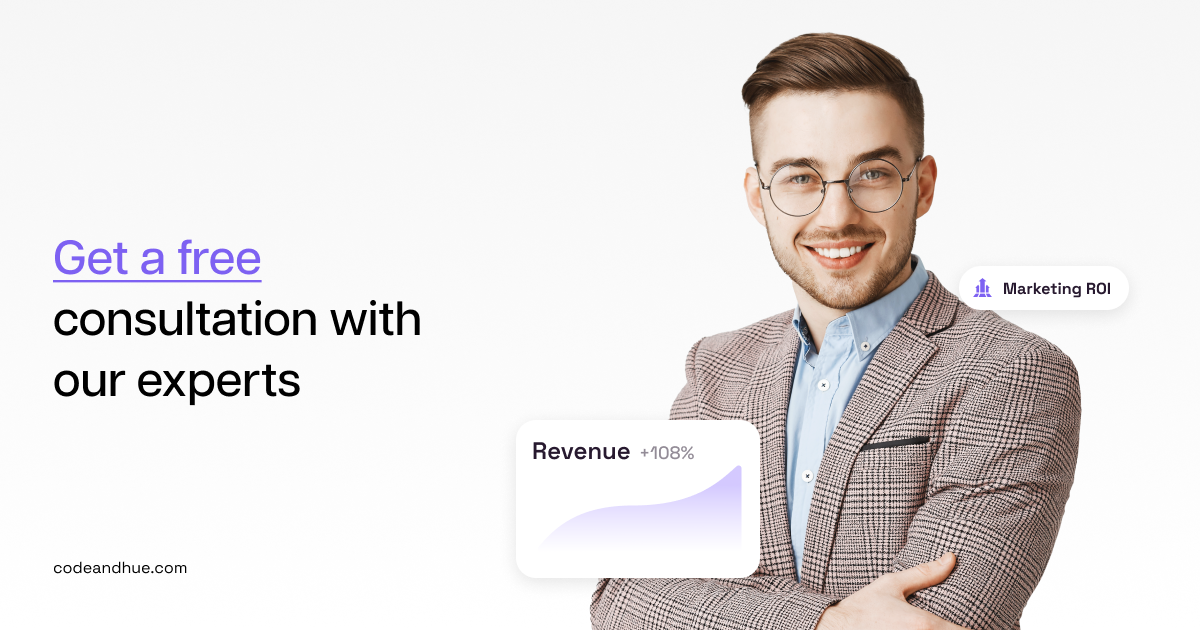Most of you might have received emails from popular brands on your birthday morning. These emails might be from your favourite brands, which you often browse to check out the latest winter collection. In the email, the brand might have even offered you an exclusive 20% off on the item you have been eyeing for your vacation a week ago. After that, you might have thought, “Wow! These guys know what I like”. You might have even felt valued and understood with this. Knowing that we are growth marketing experts who help brands talk to their customers and sell them what they want, you might be curious to know what we can do for your business with your customer data. So, we eagerly explain the secret of how brands do a tarot reading to purportedly gain insights into their customers’ needs, preferences, and expectations.
Customer data platforms are the secret behind this level of personalization. They enable businesses to use personalization techniques that connect with customers on an individual level. Customers return for more when brands tailor their interactions based on customer preferences and behaviour.
This blog will discuss how brands use a customer data platform for tailored personalization. If you are a business owner, you might be the one who needs it the most. You will understand how CDP helps businesses collect, organize, and use customer data to create more personal and meaningful experiences and help your business grow.
What exactly is a customer data platform (CDP)?
Customer data platform is an advanced software solution designed and built to help brands manage and use their existing and new customer’s data or information to drive more business conversions and grow their business effectively. A CDP acts as a central hub where customer data is stored and accessible to companies for various needs, such as running highly targeted inbound marketing campaigns, offline campaigns, running giveaway discount-based campaigns, or limited-time product sales.
But, before we discuss more about the customer data platform and understand how it works layer by layer, first, let’s get clear with what customer data is.
What is a customer data?
So now you have an idea about what a CDP is, let’s understand how and why it exists.
CDP exists because of customer data or customer information. Today, collecting and storing customer data is becoming necessary to manage both business operations and marketing operations efficiently.
Customer data is any information a customer leaves behind as they use the internet and interact with your business online and offline. These data can help you understand who your customers are, their behaviour, and what they want. Understanding and utilizing your customers’ data is crucial to creating great personalized experiences for your customers and driving your business growth.
Let’s break down the different kinds of customer data that CDPs collect and organize.
1. Personal data
Collecting personal data/information is the basis of each customer’s profile in a CDP. This type of data allows businesses to identify who the customer is. Personal data includes the following:
Name information: First name, last name, etc.
Contact information: phone number, email address, location address, city, and zip code, etc.
Social information: Instagram, Facebook, YouTube, LinkedIn, etc.
Professional information: Job, business, designation, etc.
Account information: company-specific user IDs, account numbers, etc.
2. Behavioral data
These is the information about how your customers interact with your business’s digital and physical properties.
Website activity: Pages visited, time spent on each page, items clicked, etc.
App usage: Features used, frequency of use, session duration, etc.
In-store behavior: Products browsed, time spent in different sections of the store, etc.
3. Transactional data
These are the records of financial transactions between your customer and your business.
Purchase history: Items bought, purchase dates, amounts spent, etc.
Returns and exchanges: Items returned or exchanged, reasons for returns, etc.
Payment methods: Credit card details, payment preferences, etc.
4. Demographic data
These are the information that categorizes your customers based on their different demography and personal attributes.
Age: Customer age groups.
Gender: Male, female, non-binary, etc.
Location: Geographic regions, cities, neighborhoods, etc.
Income level: Estimated income brackets, etc.
5. Engagement data
These are the data on how your customers interact with your brand’s marketing efforts and customer service channels.
Email interactions: Open rates, click-through rates, responses.
Social media activity: Likes, shares, comments, and messages.
Customer service Interactions: Inquiries, complaints, and resolutions via phone, chat, or email.
6. Psychographic data
These are the essential information about your customers’ interests, values, and lifestyles that will help the CDP to create a great personalized experience for your customers.
Interests: Hobbies, favourite activities, etc.
Values: What customers consider essential (e.g., sustainability, innovation), etc.
Lifestyle choices: Health-conscious, tech-savvy, eco-friendly, etc.
How does a CDP work?
A customer data platform works with a systematic set of processes to collect, unify, store, enhance, and activate customer data. Going through these processes, a CDP helps your business to create more personalized and effective interactions with your customers.

Let’s look in detail at how a CDP works:
1. Centralized data platform
When you run a business, your business interacts with the customers in a multiple way. Right? It could be through a website, mobile app, physical stores, email campaigns, or social media. Each of these channels collects valuable data about your customers, such as their purchases, browsing habits, preferences, and interactions. A CDP will help you gather and store all these data in one place for any business needs in the future.
2. Data unification
As we discussed, your business can interact with the customers through multiple channels and use these channels to collect valuable customer data. So, there is a possibility that your business can collect the data of the same person through different channels.
For example, a customer can browse products on your website but make a purchase through your mobile app and contact customer service via email. Here, the CDP can recognize that all these interactions belong to the same person and goes a step further by unifying all the data points related to the same customer, even if they come from different channels.
3. Data storage and organization
After unifying the data, the CDP then stores them in a structured and organized manner in the centralized database. This database is designed to handle large amounts of data efficiently. These data are grouped and indexed for easy search, retrieval, and analysis. Whether you need information about a customer’s purchase history, browsing behavior, or engagement with marketing campaigns, you can quickly find it and access it.
4. Data enrichment
A CDP not only stores data but also enhances it with valuable insights. For example, it can analyze your customer’s behaviour and browsing patterns to generate predictive analysis, such as how a customer is likely to buy or respond to a marketing offer, their purchase history, etc. It can also segment your customers into different groups based on their needs and behaviours, making all your marketing efforts more efficient.
5. Activating data for action
If you ask us what’s the most powerful feature of a CDP, then we would say its ability to utilize data for good personalization and hence, increasing sales. You can integrate CDP easily with other tools and systems your business uses, such as email marketing platforms, advertising networks, and customer service applications. This means you can use the data to create personalized marketing campaigns, improve customer experience, and make data-driven business decisions.
Notable benefits of a CDP solution
Using a customer data platform can provide many benefits to your business by utilizing your customer’s data to improve your marketing efforts, enhance customer experience, and drive your business growth.
Check out some of the key benefits of using a CDP:
a) Unified customer view
CDPs collect and integrate a customer’s data from multiple sources to create a single view of each customer. This comprehensive collection of data includes personal information, behavioral data, transaction history, engagement metrics, etc.
b) Improved marketing efficiency
With the help of a CDP, you can have a better understanding of your customers. This will help you create more personalized and effective marketing campaigns. Through CDP, you can organize your customer’s data for targeted campaigns which will lead to higher engagement and conversion rates.
c) Enhanced customer experience
CDP will help you to provide tailored experiences to your customers based on each customers’ preferences and behaviors. Your will be able to make consistent interaction with your customers across different channels (online, in-store, email, social media) to improve the overall customer experience.
d) Data-driven decision-making
CDPs provide customer data storage, making it easier for your business to analyze and gain consumer insights. These insights will help you further in making strategic decisions in marketing, product development, customer service, and more.
e) Increased customer retention
By analyzing customer data, your business can identify the trends and patterns that indicate your customer’s behavior and preferences. By understanding your customer’s needs and wants, you can run personalized offers and targeted retention campaigns to improve your customer retention rate.
f) Compliance and privacy management
A CDP ensures that customer data is processed in accordance with data protection laws. It includes features for managing customer consent, handling data subject requests, and ensuring compliance with regulations like GDPR and CCPA. It also provides transparency and control over customer data usage, enhancing trust and eliminating legal risks.
g) Streamlined data operations
CDP simplifies data management and improves business and marketing operations. It automatically collects, integrates and organizes customer data efficiently. This process simplifies operational tasks and allows teams to focus on strategic initiatives rather than data management activities.
h) Scalability
A CDP will support your business operations by efficiently managing the data storage. As you scale, your CDP can accommodate the collection of larger sets of data and a growing customer base. In this way, you can focus on growing your business and let CDP look after your customer database.
Why do you need a CDP to market your brand?
That’s a very important question you should ask – How does a CDP can help you market your brand. I will give you three main reasons why you use CDP for your marketing purposes, and I am pretty sure that will make a whole lot of sense.
A) To optimize advertisement spending efficiently
One main important thing businesses can do with CDP is to find out to whom they should advertise to and to whom not. That means you can categorize your advertisement based on the segmentation of the customer data collected. This will help your marketing team to create a more personalized experience for your customers.
For example, when you get a complete picture of each customer’s interests and purchasing behavior, you can avoid showing ads for a specific product to people who are not looking for the same product or who have already bought that product. This way, you can save your ad spending on customers to whom the advertisement is not useful, and hence, saving your money.
B) Better customer engagement with personalization
Many times this thing happens, a person visiting your website, checks out the products but leaves without buying anything for some reason. Here, you can use CDP as a tool to keep track of visitors and later on, send them exclusive personalized offers through emails or push notifications. It will help you to attract your customers to the products that match their interests and get them engaged with your brand.
C) Understanding consumer insights
A CDP collects, stores, and presents all the information about your customers in one place and makes it accessible to understand your customer’s needs and wants. This will also allow your marketing, sales, customer service, and other team members to understand each customer better and deliver more personalized service and relevant campaigns based on their interactions with your brand.
How to choose the best CDP for your business?
Please don’t get confused by the hundreds of CDP solutions available out there. Let’s keep it simple. You need a CDP that combines two main things: understanding your customers better and effectively interacting with them.
The right CDP software should collect and organize your customers’ information from your company’s systems and then effectively analyze it to interact with customers efficiently. This CDP must help enhance customer information to customize the personalization according to each customer’s behaviour and craft relevant campaigns to improve your their experiences and engagement with your brand online.
In addition, you’ll also need to evaluate the following:
Ease of implementation: You’ll need to ensure the CDP is user-friendly for your team.
Integration capabilities: Check if the CDP integrates seamlessly with your existing data sources.
Customer identity management: Ensure that the CDP can manage customer identities across various platforms and devices.
Customer’s privacy: Verify that the CDP complies with GDPR, CCPA, and other privacy regulations.
Social media engagement: Confirm that CDP can easily connect to your social media platforms like email, website, and social media.
How do we help your business?
At Code & Hue, we’re an IT Solutions and Services company focused on supporting you and your business and providing the services needed for your business’s growth. We are experts in this and can help you with all your technical needs.
First, we will help you understand what your business needs and find the best customer data platform for your business accordingly.
Be assured, that our team will make sure that the CDP we suggest seamlessly integrates with your existing systems to minimize disruption and increase productivity.
Our main focus is to keep your customer data secure and private, and ensure that we comply with all laws and regulations.
We will provide your team with comprehensive training and ongoing support throughout your growth journey and ensure you get the most out of your CDP.

Closing thoughts
In a data-driven world, a customer data platform is no longer a luxury but a necessity for businesses aiming to stay competitive. By unifying customer data from various sources, a CDP provides a comprehensive view of your customers, enabling personalized marketing, improved customer experiences, and more informed decision-making.
Whether you’re looking to enhance customer engagement, streamline operations, or drive revenue growth, investing in a CDP can transform how you understand and interact with your customers, setting the stage for sustained business success. Embrace the power of a CDP and unlock the full potential of your customer data today.
Connect with our team today to effectively improve business engagement with your customers. To know more reach us at [email protected].



